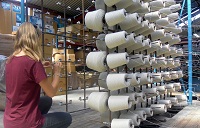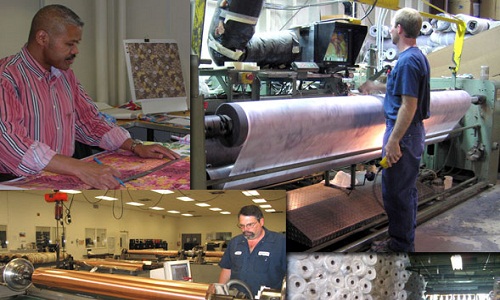"In 2016, production of US man-made fibre and filament, textiles, and apparel shipments was nearly $75 billion, an 11 per cent increase from 2009, according to the National Council of Textile Organizations, which recently released its ‘2017 State of the Industry Address’. It has been a fairly stable and strong environment for about five or six years. But the market has been flat for 18 months due to sluggishness in the global and US economies and the uncertainty in the retail sector, opines Auggie Tantillo, President & Chief Executive, NCTO."

In 2016, production of US man-made fibre and filament, textiles, and apparel shipments was nearly $75 billion, an 11 per cent increase from 2009, according to the National Council of Textile Organizations, which recently released its ‘2017 State of the Industry Address’. It has been a fairly stable and strong environment for about five or six years. But the market has been flat for 18 months due to sluggishness in the global and US economies and the uncertainty in the retail sector, opines Auggie Tantillo, President & Chief Executive, NCTO.

Yarns and fabrics accounted for $30.3 billion, or nearly half the shipments sent out, while carpet, home furnishings fabrics and other non-apparel sewn products made up $24 billion in revenues. Apparel came in at $12.7 billion. One of US textile industry’s saviors has been free-trade agreements that require that regional yarns and fabric be used in production. Of the $13 billion man-made fibre, yarn and fabrics exported from the US, a big chunk, $4.4 billion, is sent to Mexico, $1.6 billion to Canada, and another $1.3 billion is earmarked for Honduras. The Dominican Republic receives $759 million in shipments. All these countries are members of either the North American Free Trade Agreement or the Dominican Republic Central America Free Trade Agreement. Tantillo says the US textile industry exports about 40 per cent of its production and more than half goes to Mexico, Canada and Central America. Still, there are ways to increase US textiles exports to free-trade partners.
US trade agreements: NAFTA
Currently, Mexico is allowed to import 45 million sq. m. equivalent of yarn and fabric a year from places such as China, which it normally uses up halfway through the year. Canada has an annual allotment of 88 million sq. m, although it most recently used only about 25 million of that. When Trump discusses changes to NAFTA, the US textile industry would like to see these trade-preference levels eliminated. Doing away with these loopholes would undoubtedly boost US textile exports, textile producers said.
When NAFTA was being negotiated more than 25 years ago, Canada asked for a TPL because it did not have a strong textile industry. Still, the US textile industry believes NAFTA is a pillar upon which the US textile supply chain has been able to grow. Canada and Mexico are the biggest US textile markets. Also, Mexico has a lot of apparel factories sewing clothing for retailers and manufacturers who need a quick turnaround on goods.
Domestic push
The US textile industry would like to see several steps taken to encourage more domestic production. It also fully supports the Trump administration’s call to negotiate more bilateral free-trade agreements that would have yarn-forward regulations encouraging the use of American fibers, yarns and fabrics. However, the trade group is opposed to a free-trade agreement with Vietnam, now the No. 2 maker of clothing imported into the United States.
Vietnam, which is turning into a cheap alternative to China, is a Communist-run country that has a non-market economy, NCTO maintains, and would heavily disrupt the US textile industry if goods were allowed to enter the country duty-free. The US textile industry is hoping to add boost and create employment in the sector.
Strong recovery
The US textile industry is recovering from the hard times experienced in the late 1990s through the early part of the 21st century, when business was dropping 10 per cent each year. A confluence of events started in late 1999, when the Asian currency crisis occurred and practically every Asian currency collapsed by 30 to 40 per cent, causing exports to surge to the US. Then China joined the WTO in 2001, Tantillo recalled. But things are turning around. Investments in US textile fibre, yarn, fabric and other non-apparel textile production grew to $1.7 billion in 2015, a 75 per cent rise from the $960 million invested in 2009. There is a positive outlook for the industry, Tantillo said.












